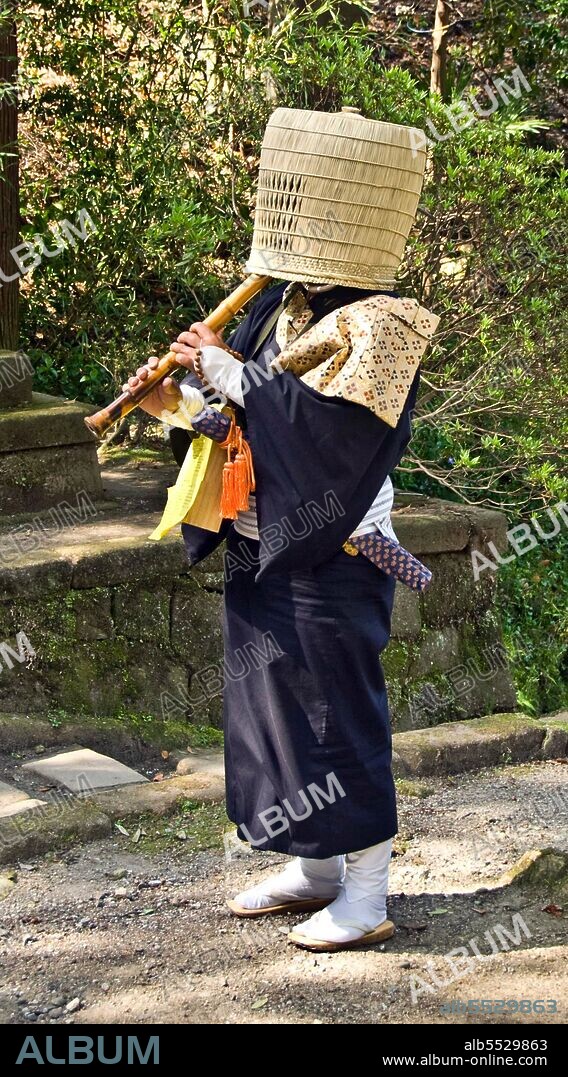alb5529863
Japan: A komuso< / i> or mendicant Buddhist monk in Kita-Kamakura, April 2008

|
Zu einem anderen Lightbox hinzufügen |
|
Zu einem anderen Lightbox hinzufügen |



Haben Sie bereits ein Konto? Anmelden
Sie haben kein Konto? Registrieren
Dieses Bild kaufen

Titel:
Japan: A komuso< / i> or mendicant Buddhist monk in Kita-Kamakura, April 2008
Untertitel:
Siehe automatische Übersetzung
The komuso (??? komuso, Hiragana ????; also romanized komusou or komuso) were a group of Japanese mendicant monks of the Fuke school of Zen Buddhism who flourished during the Edo period of 1600-1868. Komuso were characterized by a straw basket (a sedge or reed hood named a tengai or tengui) worn on the head, manifesting the absence of specific ego. They were also known for playing solo pieces on the shakuhachi (a type of Japanese bamboo flute). These pieces, called honkyoku ('original pieces') were played during a meditative practice called suizen, for alms, as a method of attaining enlightenment, and as a healing modality. The Japanese government introduced reforms after the Edo period, abolishing the Fuke sect. Records of the musical repertoire survived, and are being revived in the 21st century.
Bildnachweis:
Album / Pictures From History/Universal Images Group
Freigaben (Releases):
Model: Nein - Eigentum: Nein
Rechtefragen?
Rechtefragen?
Bildgröße:
2828 x 5100 px | 41.3 MB
Druckgröße:
23.9 x 43.2 cm | 9.4 x 17.0 in (300 dpi)
Schlüsselwörter:
ASIEN • ASIEN, KONTINENT • BUDDHISMUS • BUDDHISTISCH • EINHANDFLOETE • EINHANDFLÖTE • FLOETE • FLOETENSPIEL • FLÖTE • FLÖTENSPIEL • GEISTLICHER: MOENCH • GESCHICHTE • JAPAN • JAPANER • JAPANERIN • JAPANISCH • KONTINENT, ASIEN • MOENCH • MOENCHE • MUSIKINSTR.: FLOETE • MUSIKINSTRUMENT: ALLE • MÖNCH • ORMNAMENT: JAPANISCH • RELIGION • ZEITGESCHICHTE • ZEN
 Pinterest
Pinterest Twitter
Twitter Facebook
Facebook Link kopieren
Link kopieren Email
Email
